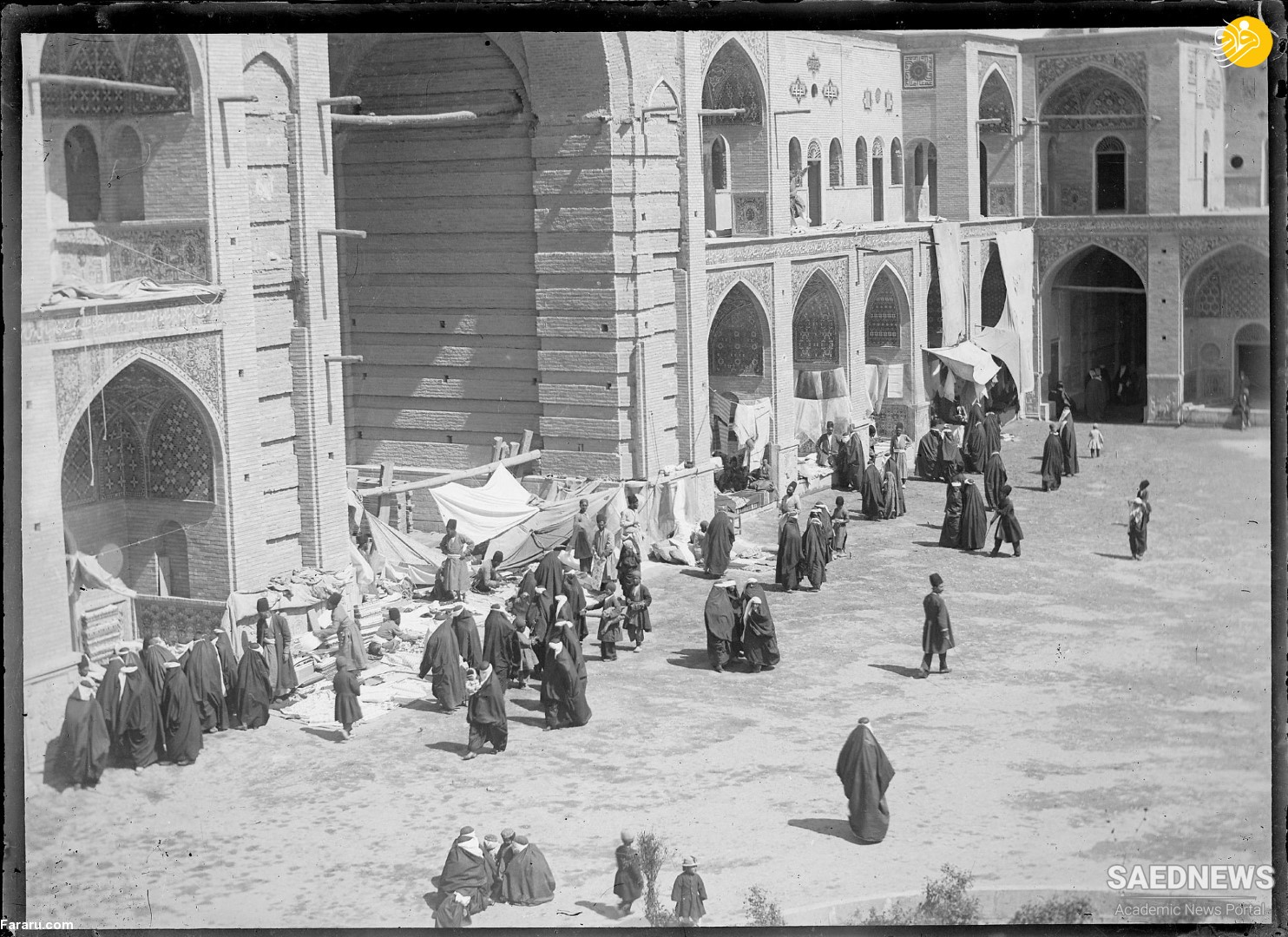In nineteenth-century Iranian towns, religion was physically present at the very centre of urban life. That centre was the bazar, where most manufacturing and commerce took place. It was the location not only for workshops, business premises, warehouses and shops, but also for places of worship (mosques and shrines) and other places for religious gatherings (tekkiehs, huseiniyehs), or centres for education (colleges, schools), which were under mainly religious control. Nineteenth-century plans and maps, descriptions by local or foreign observers, and the surviving historic centres of the towns themselves, reveal the physical closeness between buildings used for economic activities and those with a religious purpose. This was true for a great centre of pilgrimage and provincial government like Mashad in eastern Iran, the newly growing capital, Tehran, and the whole range smaller towns and provincial capitals (Qazvin, Kashan, Bam, Semnan). Businessmen, craftsmen and traders went about their work in close proximity to the places where religious experts preached, taught and organised rituals. This proximity of workshop and mosque, of commercial premises and religious buildings was not just picturesque or coincidental, but expressed significant personal and institutional connections between those involved in manufacturing or trade and religious specialists. Material relationships linked the two groups in diverse ways and were crucial to their daily lives, particularly through exchanges of resources and services which met the respective needs of religious specialists and commercial or artisan groups, and sustained relationships of mutual support and overlapping interests. Such relationships involved regular competition and negotiation, but were an important material force, established during the eighteenth and early nineteenth centuries. Following the collapse of the Safavid dynasty, which had directly supported a religious hierarchy in the 1720s, and faced with the hostility, weakness or indifference of its war-lord successors, the ‘ulama could no longer rely on rulers. They turned to local elites and patrons, acquired revenues and properties in their own right, and established links with urban commercial and manufacturing groups which were also gaining a degree of autonomy. From the nineteenth century onwards one defining material characteristic of ‘ulama in Iran was their reliance on neither state nor elite resources, but on funds from Shi’a Muslim supporters, and their own properties and profits. This was a key factor in their relative material resilience through subsequent economic and political change.


 Kurdish Ethnic Identity: Religion, Language and Culture
Kurdish Ethnic Identity: Religion, Language and Culture














































